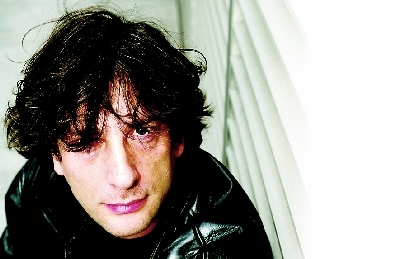
Way back in the dark old days of 1996, Neil Gaiman (working with Lenny Henry) created a six-part TV series for the BBC. Neverwhere saw office drone Richard Mayhew discovering a weird underworld beneath London, populated by characters like The Angel Islington (a real Angel!)
Gaiman subsequently reworked his screenplay as a novel, and it was recently adapted into a comic book by Mike Carey and Glenn Fabry. The original series has just been released on DVD by 2Entertain (RRP £15.99), so we thought we'd ask Neil to take a look back...
What was your original vision for Neverwhere?
“Something unlike anything else on TV at the time. I wanted it to not feel like fantasy, or not really. I wanted it to feel like a BBC historical drama.”
What did the series get right?
“Some of the casting was lovely - Paterson Joseph [as The Marquis De Carabas], for example. I like the Dave McKean title sequence. I like the way the Ordeal wound up.”
What were your biggest frustrations with the production?
”I hadn't realised that TV was very much a committee medium. I'd assumed it would be like Sandman, where if I said something in the script the artist drew it that way. Suddenly it was different, and the costumes and the look and the texture were completely different to what I'd hoped for, and mine was a small voice in the background going ‘But that's not what it's meant to be like.’”
“That showed up in lots of different ways, from the way they edited the first episode, to the highland cow playing the Beast, to the way it looked (shot on video, lit for film), to the way the BBC decided, the day before shooting, that the actors needed more ‘regional’ accents as it seemed too London-centric, and handed out accents more or less randomly to the actors.”
Did you have a second season in mind? Where would you have taken the characters?
“Yes. We were offered a second series. We asked for 45 minute episodes on film, and were offered instead 30 minutes on video and an even smaller budget, and it just didn't seem worth it.
”Season two would have been a world in which Richard was now officially a Hero, and being called upon to save people, only without any idea of how to be a Hero, and in which the Marquis would have been much more involved. The mystery of Door's sister would have run through the various episodes, but each episode would have been complete in itself, rather than a serial.”
How do you view it now, over a decade on?
“I wish it was better, but then I wished it was better a decade ago. I'm very fond of several sequences and performances, and I loved the experience of being there for the filming, but I knew how much better it could have been - how much better the thing in my head was - and that frustrated me. And was why I wrote the novel.”
Which is your favourite version - the book, the TV version or the comic book?
“The book. It's what I had in my head. Especially the ‘author's preferred version’ of the book. I did a reading of it earlier this year, for the unabridged audio book, which was fascinating. I noticed that there were places where I over-describe things I'd normally allow the reader to fill in, mostly because I wanted to try and replace the BBC version in people's heads.
”The TV version was a fascinating experience. I loved making it. I felt that episodes three to five were pretty solid, but was very disappointed with the opening and the ending.
”The comic for me is something that Mike Carey and Glenn Fabry did that I enjoyed reading but wasn't something of mine. Still not used to Door as a busty superheroine! Wonderful Beast of London, though.”
Get sneak previews, exclusive competitions and details of special events each month!
Did the experience sour you on writing a series for TV, or would you be tempted to try again?
“Well, I did do it again at one point (I wrote a Babylon 5 episode, "The Day of the Dead" in 1998 - admittedly not a series).
”I'd planned a TV series in 1997 that Carlton were going to do. After Neverwhere I went to Carlton and explained that I would only be willing to write it if I had control over the look and feel of the series. They said that I'd have ‘a seat at the table’ and I explained that I'd already had one of those on Neverwhere, and it didn't seem to make much difference. So I didn't do it. (It had serial killers and vampires in it, and would have been fairly original for 1997)”
Interviewer: Nick Setchfield
SFX Magazine is the world's number one sci-fi, fantasy, and horror magazine published by Future PLC. Established in 1995, SFX Magazine prides itself on writing for its fans, welcoming geeks, collectors, and aficionados into its readership for over 25 years. Covering films, TV shows, books, comics, games, merch, and more, SFX Magazine is published every month. If you love it, chances are we do too and you'll find it in SFX.


